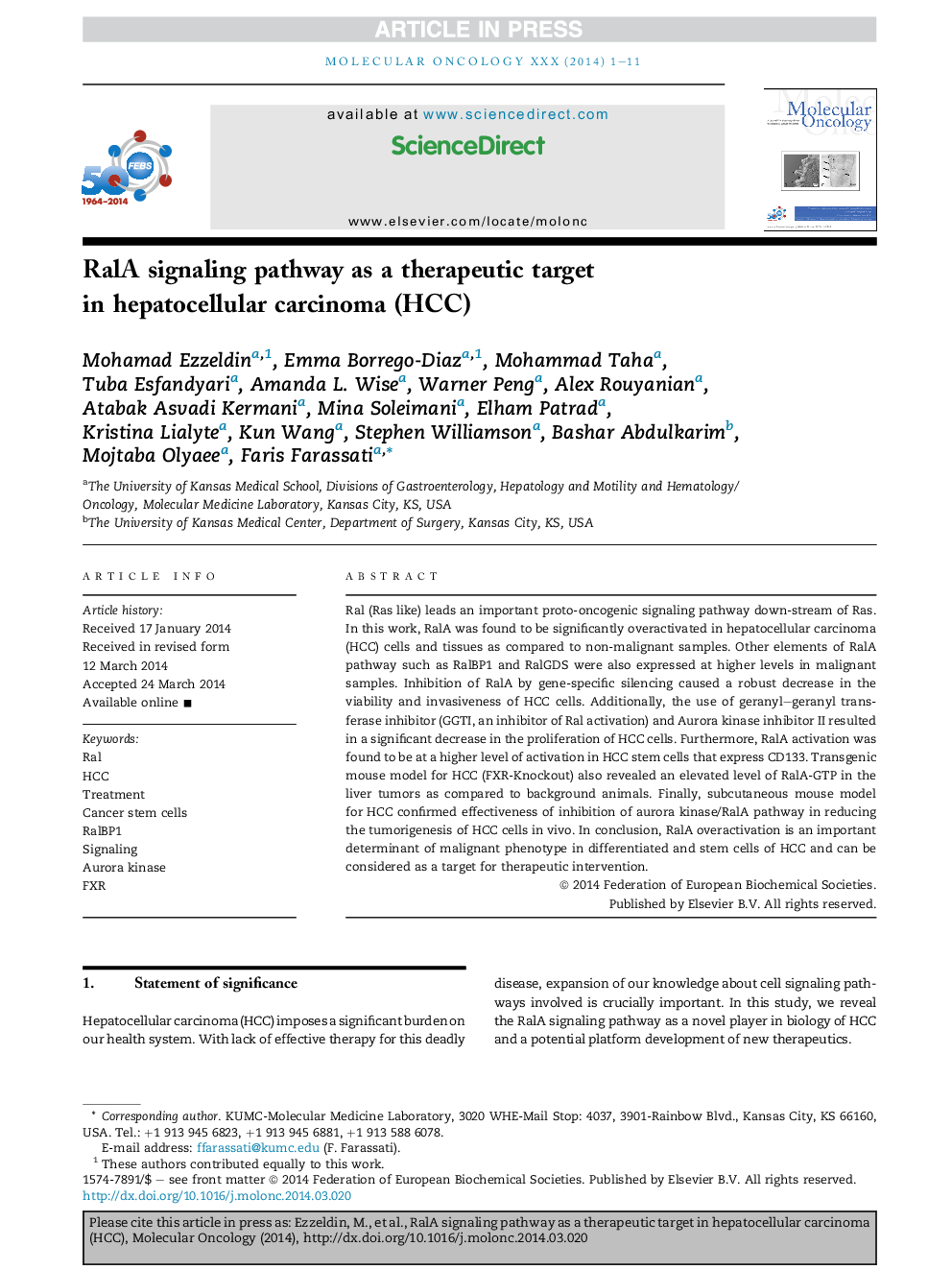| Article ID | Journal | Published Year | Pages | File Type |
|---|---|---|---|---|
| 10914643 | Molecular Oncology | 2014 | 11 Pages |
Abstract
Ral (Ras like) leads an important proto-oncogenic signaling pathway down-stream of Ras. In this work, RalA was found to be significantly overactivated in hepatocellular carcinoma (HCC) cells and tissues as compared to non-malignant samples. Other elements of RalA pathway such as RalBP1 and RalGDS were also expressed at higher levels in malignant samples. Inhibition of RalA by gene-specific silencing caused a robust decrease in the viability and invasiveness of HCC cells. Additionally, the use of geranyl-geranyl transferase inhibitor (GGTI, an inhibitor of Ral activation) and Aurora kinase inhibitor II resulted in a significant decrease in the proliferation of HCC cells. Furthermore, RalA activation was found to be at a higher level of activation in HCC stem cells that express CD133. Transgenic mouse model for HCC (FXR-Knockout) also revealed an elevated level of RalA-GTP in the liver tumors as compared to background animals. Finally, subcutaneous mouse model for HCC confirmed effectiveness of inhibition of aurora kinase/RalA pathway in reducing the tumorigenesis of HCC cells in vivo. In conclusion, RalA overactivation is an important determinant of malignant phenotype in differentiated and stem cells of HCC and can be considered as a target for therapeutic intervention.
Related Topics
Life Sciences
Biochemistry, Genetics and Molecular Biology
Cancer Research
Authors
Mohamad Ezzeldin, Emma Borrego-Diaz, Mohammad Taha, Tuba Esfandyari, Amanda L. Wise, Warner Peng, Alex Rouyanian, Atabak Asvadi Kermani, Mina Soleimani, Elham Patrad, Kristina Lialyte, Kun Wang, Stephen Williamson, Bashar Abdulkarim, Mojtaba Olyaee,
